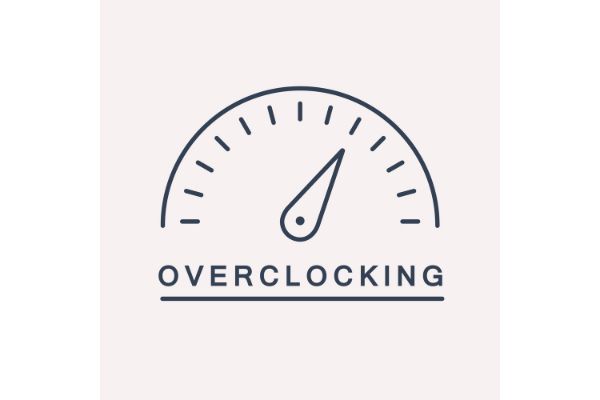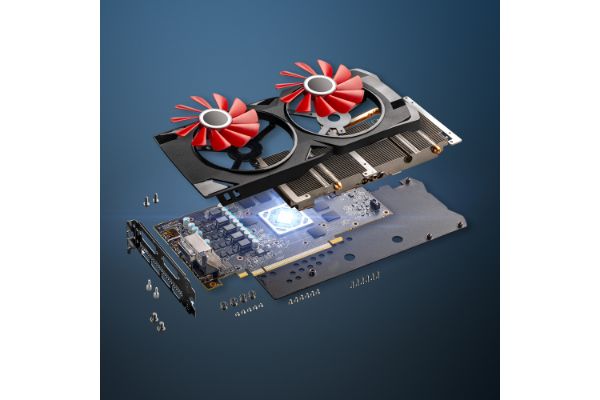Disclaimer: This post may contain affiliate links, meaning we get a small commission if you make a purchase through our links, at no cost to you. For more information, please visit our Disclaimer Page.
Modern computers have hardware that seems to increase at least some of their performance values with each new version that every manufacturer puts out. Even with what seem to be exponential increases in potential or power, some computer users are still looking to push the limits of what their devices can do.
This is where overclocking comes in, and you can do this even without in-depth knowledge of technology. Overclocking involves getting certain components inside your rig to run at faster or higher speeds than the maximums for which they are rated.
In our article, we will discuss whether overclocking something like VRAM can affect how your computer runs certain programs. Further, we’ll talk about the higher FPS potential, if any damage to the VRAM could occur from doing this, and whether the heat the memory gives off could also increase.
Table of Contents
Does Overclocking VRAM Make a Difference?
Your computer’s VRAM is its video random-access memory. If your device has a dedicated graphics processor, it should have some VRAM in order to help it perform its tasks. This memory is specific to the GPU and should not be confused with your system’s regular random-access memory, or RAM.
Your computer will access these two memory types in different ways, but the main thing to remember is that VRAM is for storing data related to graphics and visuals.
It helps your games or other graphic-heavy applications easily load complex, three-dimensional models or textures.
Your graphics processor may borrow some system RAM, but we’ll cover just what the video random-access memory is capable of here, for the most part.
If you want to overclock VRAM, you’ll ask it to run at higher speeds than it ordinarily does, which means storing or accessing data faster than you might be used to.
You can think of it as giving the memory more power to perform its tasks faster or better. Therefore, overclocking VRAM can make a difference. However, in order to be noticeable, this difference might be dependent on a couple of things.
Mainly, it can depend on the load your graphics processor is under before overclocking occurs. To get the most out of overclocking, your GPU must be running at a full load already.
This benchmark would mean that increasing the VRAM beyond how it normally runs could help the GPU perform better operations even under a full load.
It is possible that the difference won’t be as noticeable to you if your GPU isn’t already operating at full capacity.
Some users may notice low performance when it comes to games, and their immediate reaction may be to increase VRAM to overclocking speeds in order to compensate for that.
While this makes sense, it may not address the issue at its source. If you are experiencing performance-related issues while running something like a game on high-end specs, check the GPU’s percentage load first.
There are programs you can download and run to keep track of these numbers. If you notice that the graphics processor is only operating at around half of its full load with performance issues still present, this could point to a problem with the central processing unit instead.
Even though your graphics processor is a big help in games, your central processor still plays a vital role in all of your computer’s operations. Sometimes, you might upgrade your graphics processor without touching the main one.
When this happens, your GPU then outclasses your CPU. This is one of the cases in which CPU bottlenecking might occur. If you’re running a game that is quite demanding, the overall performance of your computer across multiple areas could start to stall.
When this happens, you’ll notice sluggish response times, drops in frames for the game itself, graphics issues, and other problems.
If your central processor slows down, your graphics processor can also feel some of those effects. It is a separate unit, but it still relies on communication with the CPU to help it perform its duties.
As a result, you may notice subpar performance with anything related to the graphics processing unit. However, it is important to note that some bottlenecking between these two components is normal.
It’s impossible to have perfect synchronicity between the CPU and the GPU. The key is to make this lack of connectedness as small as possible.
Closing background applications or increasing a game’s resolution are two ways you might take some stress away from an overworked central processor.
Will Overclocking VRAM Increase FPS?
The FPS measures how many frames per second a game can render the images on your computer’s screen. The higher this measure is, the more smoothly a display can show you images running back-to-back.
That means that a good FPS range makes games or videos look cleaner, with minimal choppiness or tearing that could take you out of the experience.
Some users like to overclock their VRAM specifically to see if it can positively impact the frames their games can display each second.
Yes, overclocking the VRAM should increase the FPS rate. This may not be true in all cases, but there should be a noticeable increase in many of them.
If your game is running smoothly even on high recommended specifications, you may not be able to tell the difference once you overclock the VRAM. However, this can depend on the specs for the rest of your system. It can also depend on just what kinds of graphics, textures, or models a particular game renders.
The other thing to note is error correction. Even if you can overclock your VRAM to very high levels, there is a point at which it will plateau. Once it does, the gains you’ll get in game performance will be negligible, and you may not notice them.
Furthermore, overclocking may go so high that framerates and other aspects of video quality suffer.
When these things happen, it is usually because the VRAM works so hard that errors are introduced into the system. Some error correction protocols try to fix this, but they can result in decidedly worse graphical quality, even though that seems counterintuitive.
If you’re going to overclock your VRAM, check for any recommendations for your specific make and model.
Does Overclocking VRAM Damage It?
Most VRAM memory should be rated to run at somewhat higher than its maximum recommended speed without taking any damage. Usually, a manufacturer will make this decision to keep the VRAM running at a stable rate under a heavy load.
However, anything pushed too far beyond its maximum limits for too long can be damaged, which is particularly true for technology.
Overclocking VRAM requires that higher voltages run through it continuously. If the voltage stays too high for too long, you may find it too much for the VRAM to handle. Some of the parts through which the current passes may take some damage.
This could be negligible, but it could also be enough for the memory to have trouble functioning adequately. To test for this, you may want to dial the overclocking back in increments of 50 or so Mhz.
You should be fine if the VRAM seems more stable and stays that way. This is also a good way to test the general upper limits of its overclocking capabilities.
Does Overclocking VRAM Increase Temperature?
In most cases, yes, overclocking the VRAM should raise its temperature output. It is running at faster speeds and takes on more voltage.
Both of these things increase how much power is needed for the video random-access memory to function, which means an increase in how warm it gets when it is operating. In short, more friction equals more heat coming off the component.
What Temperature Is Too High for VRAM?
The specifics of VRAM temperatures can vary slightly from one manufacturer or model to the next. However, most companies try to create video random-access memory that is able to run at temps close to 90 or 100 Celsius.
That doesn’t necessarily mean that you should run your VRAM at the upper range of these temperatures continuously, however, running hot for long periods of time can shorten the overall lifespan of the memory.
If it is running at temperatures that are close to or over this limit, it is probably too high for continuous, resource-intensive operations. You may see a dip in performance if this goes on for too long.
However, you should still be able to overclock your VRAM and run it at comfortable temps. Thanks to the graphics processor’s own cooler, which is often close to the VRAM, the chips should be able to run at decent temperatures.
Further, you might have memory that features cooling pads connecting it to the GPU cooler, too.
Conclusion
Overclocking VRAM just requires a few tweaks, and it can be a good way to squeeze more performance out of your GPU and its memory. This increase can result in smoother gameplay or textures at higher resolutions.
There is an upper limit for this, and there will be diminishing returns if the overclock gets too high. There are also some risks in damaging the VRAM or making it too hot, so be sure to follow any overclock recommendations for the memory you have in your system.


